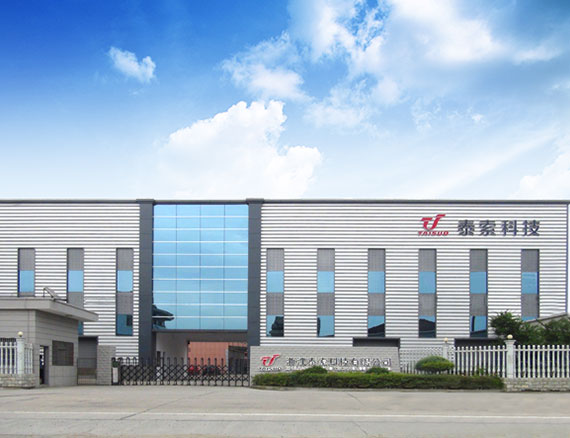other types Manufacturers
other types
IMG 0336 Instrument


IMG 0337 instrument


IMG 0339 instrument


IMG 0343 Instrument


IMG 0345 instrument


IMG 0347 instrument


IMG 0350 instrument


IMG 0354 instrument


IMG 0356 Instrument


IMG 0363 Instrument


IMG 0364 instrument


IMG 0976 Instrument


IMG 0986 instrument


IMG 1229 Controller


IMG 1231 Controller


IMG 2391 Controller


IMG 2392 Controller


IMG 2398 Controller


IMG 2399 Controller


IMG 2536 Controller


IMG 2537 Controller


IMG 2538 Controller


IMG 2542 Controller


IMG 2544 Controller


IMG 2547 Controller


IMG 3166 Controller


Feedback

About Us
TAISUO Technology was founded in 1992, and is a professional other types manufacturers and other types factory, A new professional invisible champion enterprise dedicated to the research and development, production, sales and service of thermal management technology. It has been focusing on the industry for 30 years. Taisuo has dozens of utility model and invention patents. The company has professional and rare technical control in the field of temperature and thermal management, such as "heating and cooling, temperature sensing, transmission control, special signal processing" and other multi-dimensional technical challenges, which can be used for auto parts, energy, petroleum, military industry, thermoelectricity , chemical industry, nuclear power, medicine and other industries to solve technical problems of temperature control equipment. We specialize in wholesale other types etc.
As a long-term cooperative supplier, Teso Technology has gradually spread its footprints all over the world and has continuously refreshed its transformation goals in industry segments, becoming a leading company in the temperature and thermal management segment.
Patent
-
 A multi-point oil well temperature sensor
A multi-point oil well temperature sensor -
 An integrated oil well heating cable with continuous monitoring
An integrated oil well heating cable with continuous monitoring -
 An armored cable integrating heating and movable armored thermocouples
An armored cable integrating heating and movable armored thermocouples -
 A high temperature resistant integrated underground heating cable
A high temperature resistant integrated underground heating cable -
 A heating cable with variable power in the length direction and a three-phase integrated heating cable
A heating cable with variable power in the length direction and a three-phase integrated heating cable -
 Automatic correction device for pipe forming
Automatic correction device for pipe forming -
 A multi-point temperature measurement oil well heating cable
A multi-point temperature measurement oil well heating cable -
 A multi-point oil well temperature sensor
A multi-point oil well temperature sensor -
 A convenient thermocouple calibration polarity extension connector
A convenient thermocouple calibration polarity extension connector -
 A workpiece transmission photoelectric detection signal stabilizer
A workpiece transmission photoelectric detection signal stabilizer -
 Explosion-proof tank liquid level intelligent detection control alarm device
Explosion-proof tank liquid level intelligent detection control alarm device -
 High temperature corrosion resistant armored temperature measuring cable
High temperature corrosion resistant armored temperature measuring cable
Industry Certification
-
 Zhejiang Province Small and Medium-sized Science and Technology Enterprise Certificate
Zhejiang Province Small and Medium-sized Science and Technology Enterprise Certificate -
 Yuyao Engineering Technology Center Approval Document
Yuyao Engineering Technology Center Approval Document -
 Teso thyristor voltage regulator control software copyright registration certificate
Teso thyristor voltage regulator control software copyright registration certificate -
 Quality management system certification
Quality management system certification -
 Certificate of conformity
Certificate of conformity -
 Production certification certificates for armored cables, temperature sensors, and heat-resistant pipe midsections
Production certification certificates for armored cables, temperature sensors, and heat-resistant pipe midsections -
 Market share ranking in 2022
Market share ranking in 2022 -
 High-tech Enterprise Certificate
High-tech Enterprise Certificate -
 environmental management system certification
environmental management system certification -
 Occupational Health and Safety Management System Certification Certificate
Occupational Health and Safety Management System Certification Certificate -
 Carbon fiber composite material testing report
Carbon fiber composite material testing report
News Centerr
-
News 2024-10-17
1. High temperature stabilityThermocouple sensors can work stably in high temperature environments and provide accurate ...
Read more -
News 2024-10-10
1. Basic PrincipleThermocouple sensor is composed of two different metal or alloy materials, which form a thermocouple a...
Read more -
News 2024-10-03
1. Understand the factors affecting the thickness of the insulation layerWorking voltage: The thickness of the insulatio...
Read more -
News 2024-09-26
1. Material and structural designInsulation layer materials: The insulation layer of mineral insulated cables uses speci...
Read more -
News 2024-09-17
1. Efficient heating performanceQuick heating: Tubular heaters usually have a high power density, which can quickly tran...
Read more

 English
English русский
русский 简体中文
简体中文


























 Ins: tai_suo
Ins: tai_suo

